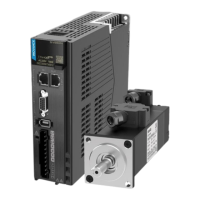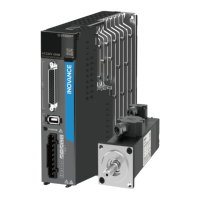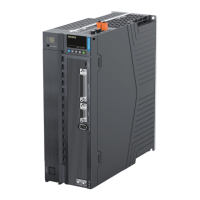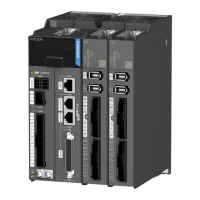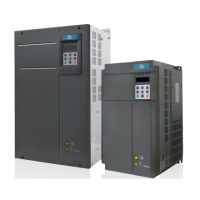Keypad
‑63‑
After parameter setting is done, that is, "donE" is displayed on the keypad, press
MODE to return to the parameter group interface (interface of "H02.00").
Forced DI/DO signals
There are five DI and DO signals on the CN1 terminal. Users can allocate the DI/DO
function and terminal logic to parameters in group H03/H04 by using the keypad (or
host controller communication), so that the host controller can control
corresponding servo functions through the DI or use the DO signal output by the
servo drive.
The servo drive also provides forced DI/DO functions. The forced DIs can be used to
test the DI functions of the servo drive, and the forced DOs can be used to check the
DO signal connection between the host controller and the servo drive.
Table 5–2 DI/DO Function Definitions
No. Name
Function
Name
Description
Remarks
Consisting of two digits which indicate the function No.
Description of DI Signals
01 S‑ON Servo ON
Disabled ‑ Servo motor
disabled in local mode
Enabled ‑ Servo motor
enabled in local mode
The S‑ON function is only
active in non‑bus control
mode.
The corresponding
terminal logic must be
level‑triggered.
02 ALM‑RST
Fault reset
Enabled ‑ Fault reset
executed in local mode
Disabled ‑ Fault reset
not executed in local
mode
The ALM‑RST function is
only active in non‑bus
control mode.
The corresponding
terminal logic is
recommended to be level‑
triggered.
14 P‑OT
Positive limit
switch
Enabled ‑ Forward drive
inhibited
Disabled ‑ Forward
drive permitted
Overtravel prevention
applies when the load
moves beyond the limit.
The corresponding
terminal logic is
recommended to be level‑
triggered.
15 N‑OT
Negative
limit switch
Enabled ‑ Reverse drive
inhibited
Disabled ‑ Reverse drive
permitted
Overtravel prevention
applies when the load
moves beyond the limit.
The corresponding
terminal logic is
recommended to be level‑
triggered.

